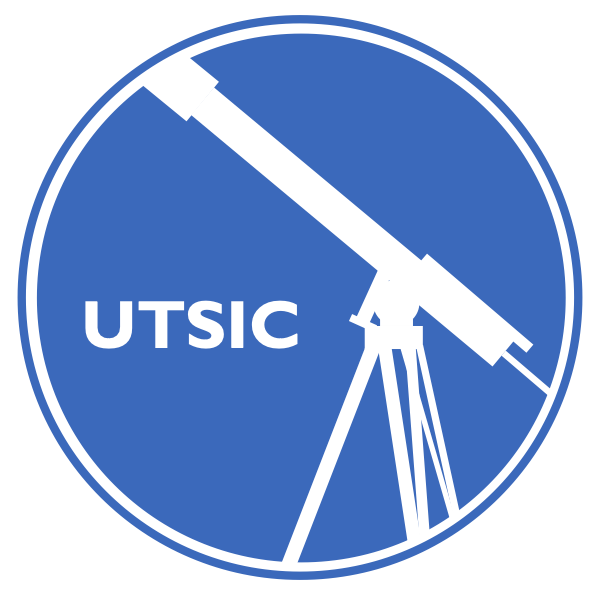This object is a sextant with two telescope/optical attachments in fan shaped wooden storage box.
The sextant is faded brass with wooden handle, angled with graduated arc below and mirror, ring mount for telescope attachments, and filters above. The ring mount has an adjusting brass knob and grooves for telescope attachments. The mirror is adjacent to the ring mount, faces away from ring mount (if the sextant is held in the right hand), and slightly cracked.
Adjacent to the mirror are 4 coloured glass filters for reflected light from the mirror. Mounted adjacent to the filters is an oval glass piece, split in two. One half of this is a mirror angled to reflect light from the primary mirror to the ring mount. The other half is clear to allow direct observation through a telescope attachment on the ring mount. Adjacent to the split oval lens are three more coloured glass filters for direct light from a distant observation.
The graduated arc covers roughly 60 degrees and is marked 0 to 140 on one side and 0 to 5 on the other. Finely inscribed increments between these numbers may be read using a magnifying glass attached to the measuring arm of the sextant. Measuring arm can move along the graduated arc and has a movable viewing space marked from 0 to 10. One telescope attachment is short (12.9cm) and the other long (17.9cm); each telescope is 2cm in diameter.
Engraved on the sextant measuring arm is “Rob’t. Deane Bombay”. Engraved on the graduated arc is “Troughton London”. The sextant and box additionally have a small blue label: “University of Toronto ASTRONOMY David Dunlop Observatory”.
Accession Number: 2011.ast.1
Alternative Name:
Sextant: Wood, Brass, Glass. Box: wood with some felt lining.
On graduate arc: “Troughton London” on graduated arc. “Rob’t. Deane Bombay” on measuring arm. “University of Toronto ASTRONOMY David Dunlap Observatory” on sextant and outside of box. Penciled on the inner lid of the box is “Miller 1925”.
Dimensions (cm): Length = 28, Width = 25.5, Height = 11
Sextants are used to measuring angles between distant objects. They are used in navigation, astronomy and surveying.
Very good: The metal surfaces of sextant body are a dull brown, but otherwise in good condition. The magnifying piece on measuring arm is slightly bent. However, all of the lenses are present.
The wooden box is in poor condition: There is a hole on one side, and bottom panel is loose and liable to falling out.
A clock-winding key described as formerly kept with his object is no longer present.
Associated Instruments: 2011.ast.02, 2011.ast.03
Manufacturer: Troughton, London
Date of Manufacture: 1798-1822
This sextant is inscribed to “Rob’t Deane, Bombay”. A Captain Robert Deane of Bombay is listed in the November 1819 edition of The Asiatic Journal upon the death of his wife, as a member of the East India Company’s “Marine Establishment”. In 1822, he appears again upon another marriage, listed as “late” of the Company. This same Robert Deane, is named multiple times in “A History of the Indian Navy”, by Charles Rathborne Low (1877). He was a Second Lieutenant in 1802 and is listed as joining the Bombay Marine of the East India Company on February 12, 1798 (pg 216).
If it was his, the sextant was likely acquired by him sometime after 1798, and prior to 1822.
The sextant may have been acquired by Toronto astronomer A. F. Miller, perhaps in 1925. It may then have been donated use at the Department of Astronomy and Astrophysics, or a display object. This object was likely moved from the David Dunlap Observatory in Richmond Hill in 2008, upon the sale of the observatory. It was stored at the Department of Astronomy and Astrophysics until 2017, when it was moved to a new storage location in McLennan Physical Laboratories.
Additional Information and References:
Historical Notes:
Themes:
